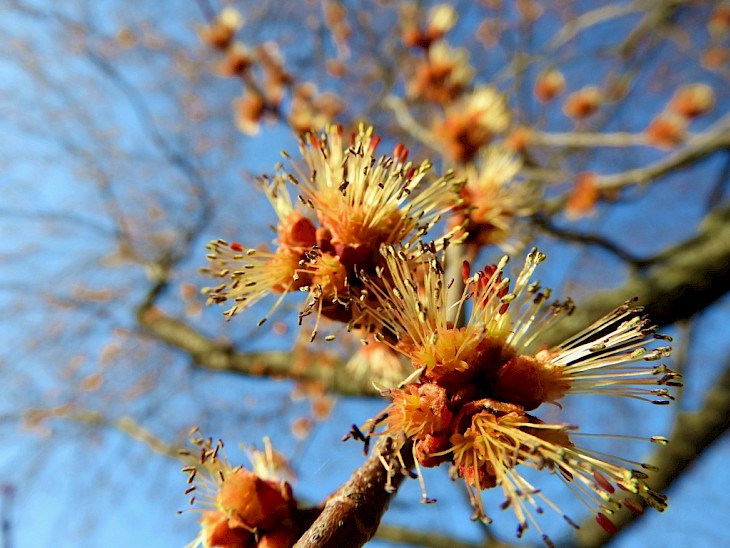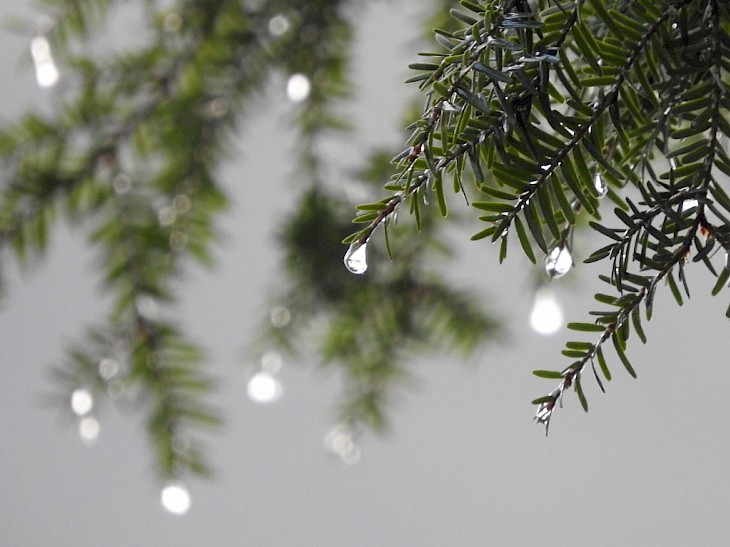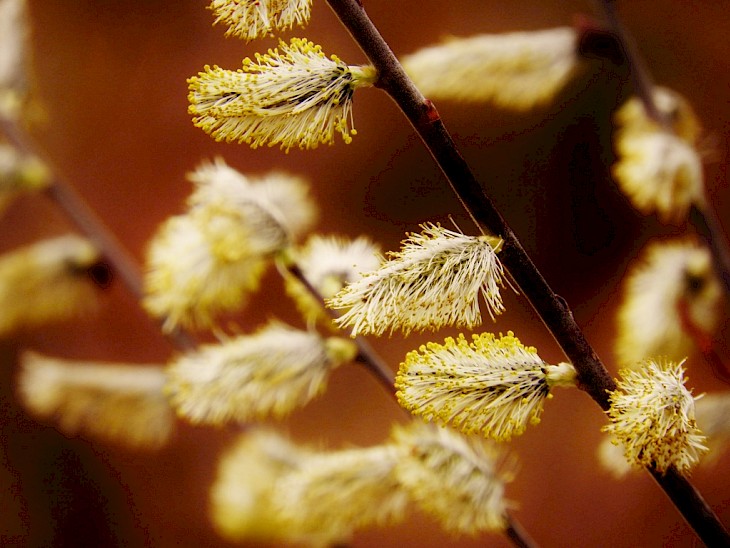After a day of rain, the clouds parted and a setting sun made the world sparkle. It felt like a sacrilege to stay inside. You just don’t ignore spring. Taking my camera for a walk along the driveway (I have a really lovely driveway), I ambled slowly, stopped often, and absolutely wallowed in the ecstasy of a warm, meditative walk with no mosquitoes.
Deep breathing came naturally in this mood and in this weather. The air was delicious. Damp soil, decomposing leaves, and that spicy essence of new life swirled around me so richly it was almost visible. But being visible isn’t everything.
“The true essence of nature can be captured only by making use of all our senses, and the sense of smell is not the least of these,” wrote Lois Nestel in her infinite wisdom. As the first Naturalist and Director at the Cable Natural History Museum, Lois once shared her insights generously with newspaper readers across the state. I’d like to share it with you again.

“In this season, when one is keenly aware of the scents of the earth, the fragrance of spring flowers is expected and perhaps taken for granted: The delicate perfume of arbutus and the tiny white violets that grow on moist soil, the richness of wild roses and, later, the heavy fragrance of pyrolas. But there are drifts of odor so elusive that, caught with one breath, they are gone the next. The faint tang of newly opening leaves defies description—a touch of spiciness, an intangible freshness that is purity, yet something more.”
“While walking down a woods road on a warm day it is possible for a person sensitive to odors to recognize, without seeing, the type of foliage through which one is passing. Each is distinctive: the fresh cleanliness of newly opened aspen leaves, the slightly acrid oak, sweet blooming basswood and the unforgettable odor of sun-warmed evergreens: spruce and balsam, pine and hemlock…These scents are tantalizing, haunting, often bringing a flash of memory from forgotten days…One may not know them by name, but the scent is as familiar as an old friend.”

“Odors play a greater part in our lives than we may realize. Have you not at some time had a situation suddenly recall a scent so clearly that it seems momentarily to fill the air? It might be one of many things—a lake at dawn, a dusty summer road, freshly cut grass, hay drying in the sun, or the deep primordial scent of swamp and bog.”
“A swirl of warm, aroma-laden air from a hillside, a draft of cool cleanliness from a hollow may awaken vague stirrings of the spirit; yet we can only appreciate but cannot interpret, as do animals, all that the scented air contains. But thus may we, at no cost and little effort, enrich our lives; if we fail to do so we have deprived only ourselves.”
While the scents of spring are indeed lovely and worth noticing, the flowers of spring may occasionally outshine them. Lois wrote charmingly of these, too.
“All the tender shades of spring are now unfolding. All the hues of autumn are here, only in tones more delicate and subtle. Soft shades of pink and wine and the daintiest of yellow blend with the sheerest of green as buds unfurl and fragile leaves and blooms unfold.”

“At a distance forest and brush land wear watercolor shades and soft washed pastels. Tree blossoms, seldom noted, are small perfections deserving closer examination and appreciation. Well known are juneberry, cherry and plum blossoms, hawthorn and red elderberry; less commonly recognized, though equally beautiful in a miniature way, are the flowers of the maple and oak—delicate clustered flowers of russet, rose and yellow dangling on slender pale green stems—or the willows, their catkins now masses of gold and chartreuse.”
“Wood flowers bloom now before leaf shade from trees cuts down their light. Bloodroot leaves embrace the stems of snowy, golden-eyed flowers and hepaticas, spring beauties and wood anemones nod heads of lavender, pink and white, while trailing arbutus perfumes the air from pale, clustered blossoms. Soon trilliums will dance beneath the trees and the marshlands will glow yellow with marsh marigolds, rosy with bog laurel, and white with Labrador tea.”
“Shade on shade, tone on tone, the palette of nature is spread with her most gentle colors. The harsh, the gaudy may come later but now is the time for tenderness.”
Now is the time for tenderness. Deep breathing, slow walking, and (don’t take it for granted!), a delightful lack of mosquitoes.
Special Request: If you enjoy Emily's book, Natural Connections: Exploring Northwoods Nature through Science and Your Senses, and think it should be available for more people to read, then take a moment and request it at your local library and bookstore! Order your copy at http://cablemuseum.org/natural-connections-book/. Listen to the podcast at www.cablemusum.org!
For 50 years, the Cable Natural History Museum has served to connect you to the Northwoods. Come visit us in Cable, WI! Our new exhibit: "Better Together--Celebrating a Natural Community" will open on May 2!
[Photos by Emily Stone]
Last Update: May 06, 2017 3:22 pm CDT

















